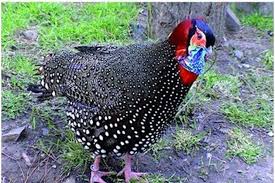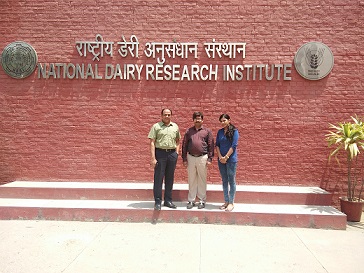W estern tragopan is a medium-sized brightly plumed pheasant found along the western Himalayas from northwestern Pakistan through Jammu and Kashmir into Himachal Pradesh and possibly the western pats of Uttarakhand. It is highly endangered and globally threatened. The current population of the species is reported to be between 2500 and 3500 individuals,down from around 5,000 estimated in earlier studies.
A recent survey by a team of scientists and wildlife experts has shown that it is possible to conserve it if proper efforts are taken. The team focused on Jammu and Kashmir. They documented the current status and distribution of the bird through field surveys and also predicted its potential distribution with the help of a model.
The modeling of the habitat has shown that there was a reasonably good potential for the bird to thrive in the state. Large tracts of land (over 7,000 sq km) spread over Pir Panjal range and Jhelum and Chenab valley were found to offer suitable habitats for it. However, presently only a small portion of the area (156 sq km) came under the protected area network in the form of national parks, wildlife sanctuaries and other conservation zones. The protected areas were mainly in Jhelum. Chenab and Pir Panjal were poorly protected.

“All the tragopan sites are being used for livestock grazing and collection of non-timber forest produce resulting in disturbance and degradation of the Tragopan habitat and thus threatening its survival,” the team said in a report published in the latest issue of science journal Current Science. “There is an urgent need to plan long-term monitoring and initiate appropriate measures to conserve the species",they added.
The team consisted of Riyaz Ahmed, Kasturi Deb, and Rahul Kaul of Wildlife Trust of India, Noida,Narayan Sharma and Veer Bhatnagar of Nature Conservation Foundation, Mysuru, and Upendra Pacchnanda of Department of Wildlife Protection, Srinagar. Dr. Sharma is also associated with the Department of Environmental Biology and Wildlife Sciences, Cotton College, State University, Guwahati.
The team conducted bird counts at five areas : Tattakuti, Limber and Lacchipora wildlife sanctuaries,Khara Galli Conservation Reserve, and Kazinag National Park, over a period of five years from 2007-11.Kazinag NP and Limber and Lacchipora wildlife sanctuaries are in Jhelum valley and Khara Galli and Tattakuti in Pir Panjal range.
In addition, they collected secondary information about its presence in Chenab Valley (Kishtawar,Padder Valley, Doda and Bhaderwah), Pir Panjal (Noorpur Galli, Sanwjian-Narian, and Sudh Mahadev),and Jhelum valley (Rampur-Bunyar). (India Science Wire)




